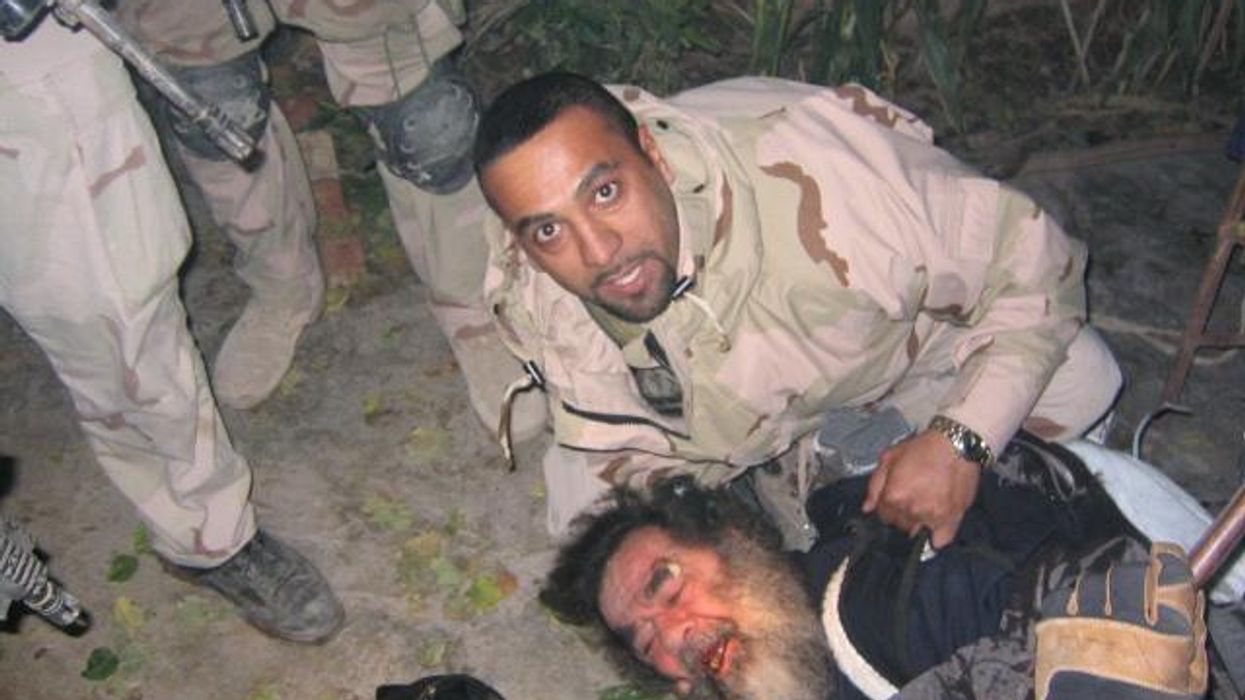Strategists, like park rangers and travel writers, ignore geography at their own peril. When building an arc of Asian allies to surround and counter China, the Biden administration recently dodged such danger. It substantiated what nearly every U.S. foreign policy thinker since Theodore Roosevelt has advocated: the Philippines, by way of its position, remain indispensable to U.S. security in Asia.
Back in Roosevelt’s day, U.S. strategists used the Philippines as a key logistics hub for air and maritime units that could protect and enhance commerce and repulse regional aggression. Although America’s combat logistics and potential have substantially improved, the need for “forward” sites that enable and expedite a rapid American military response remains pertinent.
And it’s not only about logistics. With the South China Sea for a backyard and Taiwan 100 nautical miles away, the Philippines finds itself at the center of the region’s foremost flashpoints. The archipelagic country adjoins two major maritime chokepoints (the Luzon and San Bernardino Straits), control of which will almost guarantee command of the seas in a Pacific conflagration.
For all those reasons — and more — U.S. Secretary of Defense Lloyd Austin visited Manila on February 2 to secure American access to four more Philippine military bases, bringing the total to nine. Although the Enhanced Defense Cooperation Agreement (EDCA) prohibits a permanent U.S. presence on these bases, it permits a “light and flexible” presence of rotational forces. Far from handicapping U.S. military operations, this model of light, rotational access (versus an entrenched, permanent footprint) offers the best way forward for America’s forward presence.
Flawless defense policies rarely exist. There are no easy, obvious options. Choosing the best policy, warrants a cost-security (or cost-benefit) analysis. Do the security benefits provided by a policy (deterring our enemies, assuring our allies) outweigh its costs? At the end of the Cold War, experts began asking this question about America’s sprawling, entrenched overseas presence. Since then, a monotint debate has emerged about the nature of America’s future forward presence.
Some experts couldn’t justify maintaining hundreds of military bases thousands of miles away from the United States when it lacked an enemy like the Soviet Union. These “retrenchment” proponents believed (and still do) that the United States needs to “come home” and tackle domestic problems while offloading security responsibilities to capable regional partners. No more foreign dragons to slay means no need for America’s foreign fortresses.
A globally entrenched presence made even less sense when scholars like David Vine, in his book “Base Nation,” totaled up the laundry list of costs. Calculable ones included the U.S. government spending an average of $30,000 more to station a servicemember overseas than in the United States. Or the billions of dollars spent annually to build and maintain overseas installations. Then consider the intangible costs. Many forward deployed servicemembers (myself included) see their families once or twice a year (at most). If those members are accompanied by their families, the latter endure frequent international moves on top of long deployments and family separation. And, of course, the host countries can suffer too. Exploitative prostitution rings flourished near U.S. bases in the Philippines and South Korea. U.S. troops stationed in Okinawa have committed violent crimes against locals.
In rebuttal, many security experts invoked history to defend a permanent presence. The “great power” threat environment may have ended, Colonel David Shunk argued in 2017, but a “joint force forward presence” still “deters wars, assures allies, favorably shapes the security environment, and enables contextual and cultural understanding.”
Deterrence and assurance are notoriously tricky to measure. Analysts can tell you how much a missile costs, but they’d be lying if they could quantify how much that missile deterred an adversary from a dangerous course of action. The same goes for America’s overseas presence, which is why most proponents of permanent forward basing advance their claims via a chain of logical assumptions.
A permanent presence helps Americans understand the challenges and needs of the host nation while improving the local economy. The two militaries train together and operate together during emergencies, enhancing interoperability. The United States commits itself to the host nation’s defense in exchange for guaranteed operational access — a hot commodity in an age of anti-access/area denial (A2/AD) warfare.
Although retrenchers claim that U.S. bases undermine a host nation’s security, a 2018 RAND study found the opposite. On average, a nearby U.S. troop presence lowered the chance of interstate war and inter-allied militarized disputes. There was also no consistent association between a U.S. forward presence and intrastate conflict. While a U.S. troop presence can raise the likelihood of low-intensity militarized disputes, such incidents are preferable to outright conflict.
Perhaps the most cogent argument for retrenchment — a decade ago — was that the U.S. military didn’t need all these bases because it was fighting terrorists in the Middle East. As Vine admitted, “[d]uring the Cold War…to some extent U.S. bases in Europe and Asia played a legitimate defensive role. In the absence of a superpower enemy today, the argument [for forward presence] … is much harder to sustain.” Washington has not officially ignited another cold war with Beijing, but China is a superpower adversary. The presence of such an adversary necessitates some degree of forward presence.
But to what degree?
The best strategy will seek to obtain as many of the benefits of permanent, forward basing (i.e., partner training and interoperability, pre-positioning of weapons and equipment, familiarization with a partner’s military and infrastructure, and access in a time of war) while curtailing the costs of permanent presence. It will acknowledge that an all-or-nothing approach is capricious at best, and perilous at worst.
The Philippines’ EDCA basing arrangement offers a plausible way ahead. This light, subtle temporary presence, where American troops frequently train and operate with Filipino forces on Filipino bases and leave equipment and supplies behind, ensures the U.S. military builds and maintains the appropriate resources, relationships, and regional security architecture before the next fight. It achieves the necessary security benefits without incurring the economic, political, legal, and social costs of a permanent presence — or aggravating host countries (like the Philippines, which ended the permanent American presence in 1992). Ultimately, it accepts that although a handful of permanent outposts (like U.S. naval and marine bases in Japan) are critical to deterrence and rapid deployment, future installations won’t require the overwhelming force of a permanent presence.
More EDCA bases offer a unique opportunity to test the feasibility of a lighter footprint in countries averse to a permanent U.S. presence. Going forward, Washington should avoid “mission creep” that undermines these arrangements by trying to make this access “permanent.” Instead, it should continue planning “light presence” arrangements throughout Asia with allies that don’t want to offend China but still want to improve their national security in an increasingly hostile environment. For years, military planners have sought defense-in-depth; defense-in-breadth could work too.
The views expressed in this article do not necessarily reflect the views of the U.S. Navy or U.S. Department of Defense.
















